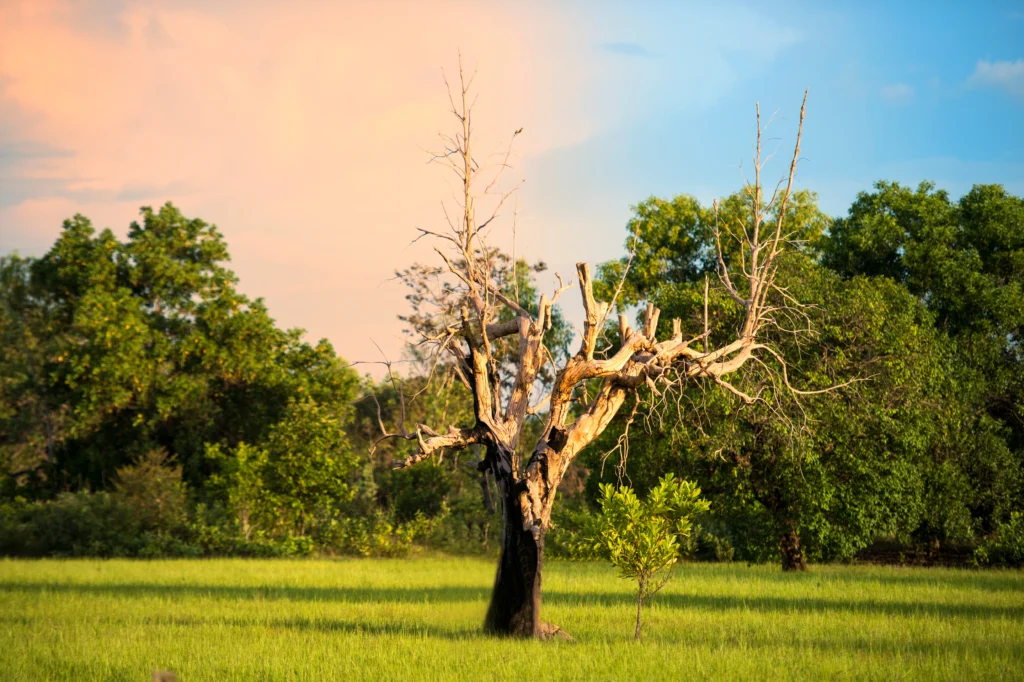
When it comes to gardening and tree care, one common concern is determining whether a tree is dormant or dead. This distinction is crucial for maintaining the health of your landscape and making informed decisions about tree care or removal. Here are some steps and tips to help you assess the status of a tree in your Collinsville, IL yard.
Understanding Dormancy
Dormancy is a natural state for trees during adverse conditions, most commonly in winter. During this period, trees conserve energy by halting growth and shedding leaves. This process is crucial for the survival of the tree through harsh weather conditions.
Visual Inspection
- Look at the Branches: In a dormant tree, the branches will be intact, without excessive breakage or brittleness. The limbs of a dead tree, however, are likely to snap easily and will appear dry and brittle.
- Check the Buds: Buds are a good indicator of life in a tree. Even during winter, dormant trees should have buds that are waiting to bloom in the spring. If the buds are dried up, shriveled, or completely absent, this might be a sign that the tree is dead.
- Scratch Test: One of the simplest methods to determine if a tree is alive is the scratch test. Gently scratch a small piece of bark from a twig or branch. If the layer underneath is moist and green, the tree is alive. If it is dry and brown, the tree might be dead.
Other Signs to Consider
- Fungal Growth: The presence of fungi, like mushrooms, especially at the base of the tree or on the trunk, can indicate internal rot and possibly a dead tree. Fungi thrive on decaying organic material.
- Peeling Bark: Bark that is peeling away or cracking without new growth underneath can be a sign of a dead tree. Healthy trees usually shed old bark and promptly replace it with new layers.
- Leaf Problems: If a tree fails to leaf out in the spring or loses leaves prematurely, this can be a symptom of distress. However, be cautious as this can also be a sign of a disease or pest problem rather than death.
Consulting a Professional
If you’re unsure about the condition of a tree, it’s wise to consult a certified arborist. Arborists can provide a more thorough diagnosis and offer solutions, whether it’s treatment for diseases or pests, or safely removing a dead tree to prevent potential hazards in Collinsville, IL.

Preventative Care
Preventive measures can protect trees from becoming stressed and vulnerable to diseases and death. Adequate watering, proper pruning, mulching, and fertilizing as per the soil requirement are crucial. Regular check-ups can catch early signs of distress and help maintain tree health.
If you are looking for a company who can come out to inspect your trees, contact Merritt’s Tree Service today.